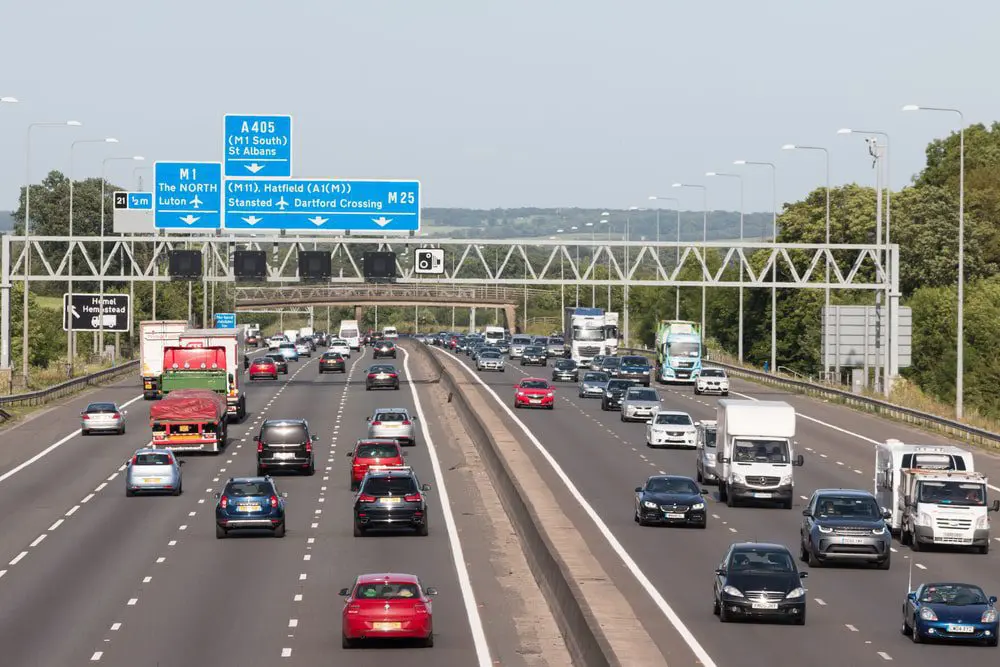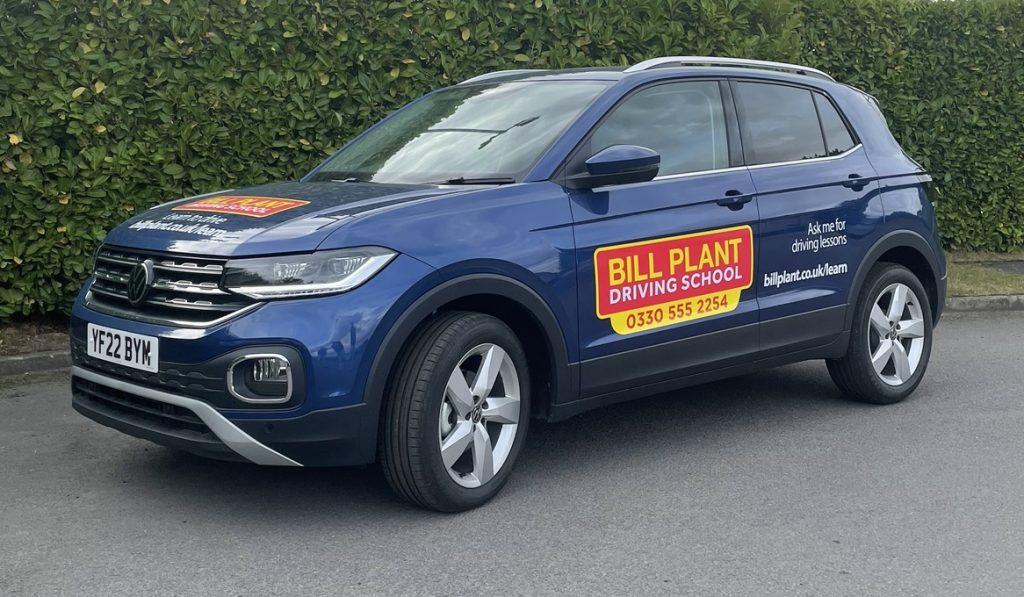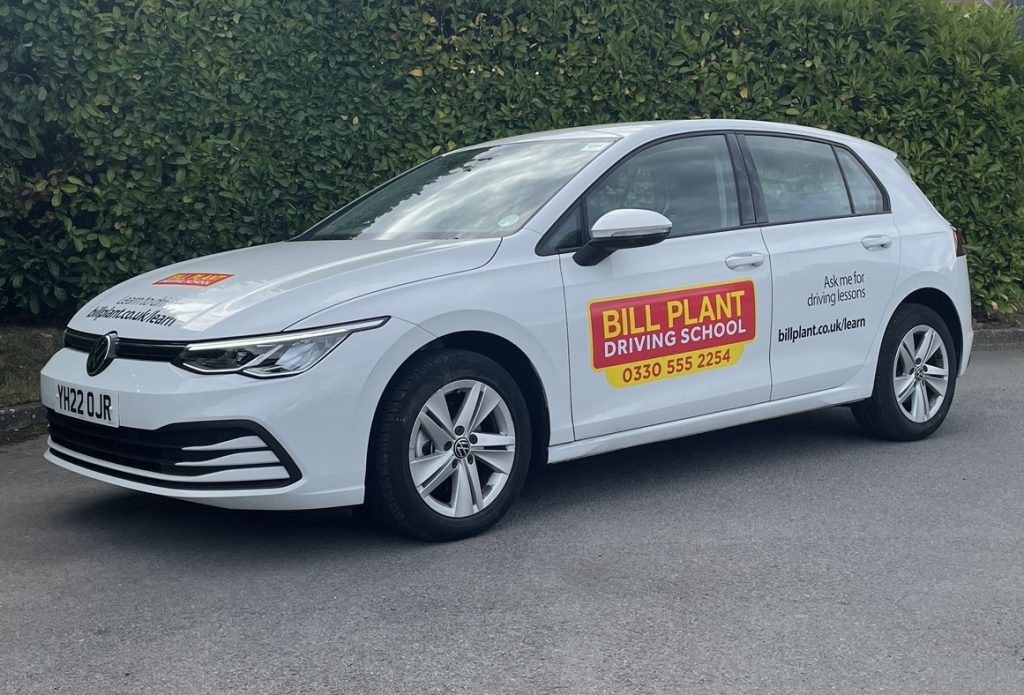
Are you wondering, are learner drivers allowed on the motorway? If so, you’re in the right place. Thanks to a change in the rules in 2018, learners are now allowed on motorways.
Although motorway driving lessons can be quite intimidating for many learner drivers, they will lead to a broader driving experience. If you’re currently taking your driving lessons and you’re considering going on a motorway, scroll down for more information on the rules for learner drivers on motorways.
The rules for driving on the motorway as a learner
A learner must be accompanied by an approved driving instructor
Learner drivers must only ever drive on a motorway if they’re with a DVSA approved driving instructor. This is for safety reasons and means that trainee driving instructors are not allowed to take learner drivers for motorway lessons.
The vehicle must be fitted with L-plates and dual controls
The updated rules state that the learner vehicle must be equipped with L-plates and dual controls for motorway lessons.
Since learner drivers don’t have the reaction time or knowledge of a more experienced driver, a dual-controlled car ensures that the driving instructor can step in if something goes wrong. This means learner drivers can feel more reassured that if they do make a mistake, their instructor can take over, so both parties stay safe.
Is it compulsory for all learners to drive on the motorway?
No, it’s not mandatory. It will be up to each instructor to decide if their student is ready to drive on motorways.
Although a motorway lesson isn’t essential, exposing learner drivers to motorways should provide a better understanding of how high-speed driving is performed safely.
Why did the law change?
This law was changed to better prepare learners for a lifetime of safe and careful driving. Allowing learner drivers on the motorway will:
- provide a more varied driving experience before a driving test
- provide training on how to enter and exit a motorway, safely overtake and use each lane correctly
- teach learner drivers how to safely drive at high speeds
- teach learners to understand road signs specific to motorways
- teach learner drivers how to deal with a broken-down vehicle on a motorway
- boost their confidence in driving on motorways on their own after passing the driving test
Are learner drivers allowed to drive on dual carriageways?
Yes, driving instructors can take their learners on dual carriageways as long as the car displays L-plates. Although this may seem daunting to many young drivers, driving on a dual carriageway is excellent practice for motorway driving because of their similarities.
Are learner motorcyclists allowed to have lessons on the motorway?
No, this new law only applies to learner car drivers. Learner motorcyclists aren’t allowed on motorways. This is for safety reasons because the instructor would have no control over the learner’s motorbike if something went wrong.
Because a motorcycle instructor usually teaches two learner riders in the same lesson, it would be very unsafe for them to learn on a motorway. However, once a motorcyclist has passed their test, they can take motorway lessons if they wish.
FAQs
Can learners go on the motorway when accompanied by a licenced driver?
You may be wondering if learners can go on the motorway with a licenced driver. But the answer is no, as it is illegal for a learner driver to go on the motorway if they’re only accompanied by friends or family members, even if they’re licenced drivers.
This is because the car won’t be fitted with extra controls, meaning that the passenger wouldn’t be able to take over in the event of a mistake or accident. Only driving instructors can take a learner driver onto the motorway in a dual control car that features L-plates.
How do motorways differ from dual carriages?
Although motorways and dual carriageways share some similarities, they are also quite different. Some of the well-known differences between the two include:
- Only motor vehicles are allowed on motorways, so cyclists and pedestrians are not permitted to use them.
- Slow-moving vehicles such as tractors are allowed on dual carriageways but not motorways
- Motorways have an “M” before or after the road number, such as M5 or A1 (M). The (M) after the dual carriageway number means it has been upgraded to a motorway
However, some differences are quite subtle and not many people will notice them straight away, such as:
- Motorway junctions will always be numbered
- Signs on motorways are always blue, whereas dual carriageway signs are green
- You can only use the right-hand lane for overtaking on motorways, but on dual carriageways, you also use it for turning right at a roundabout
- Exiting from a motorway always involves using a slip road
- Roundabouts and traffic lights are rare on motorways but very common on dual carriageways
How many motorway driving lessons will I need?
This depends on each learner driver. Everyone learns at a different pace, and some young drivers may be more confident than others. Those who are less confident will need more practice on motorways.
Remember, there’s no minimum or maximum number of hours you need to do before taking your driving test.
Is motorway driving part of the UK driving test?
No, despite the law being changed, driving on motorways isn’t part of the practical driving test. It’s not known whether it will be included in the driving test in the future, but for now, there are no plans to add a motorway section to the test.
Final thoughts
Hopefully, this guide has answered whether you can drive on the motorway as a learner.
Ultimately, it’s up to you and your driving instructor whether or not you practice driving on motorways. Although it’s not part of the practical test, driving on motorways will substantially broaden your driving experience and knowledge. If you do not feel comfortable driving on the motorway as a learner driver, you can always take pass plus driving lessons with your driving instructor once you have passed your practical driving test.
It can be intimidating to drive on a motorway, but there are things you can do to make your experience go smoothly. These include staying below the speed limit, keeping your distance from other cars, especially on wet or icy roads, and following instructions from your approved driving instructor.

